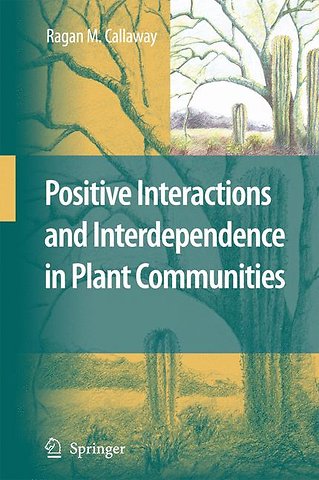Positive Interactions and Interdependence in Plant Communities
Samenvatting
This book marshals ecological literature from the last century on facilitation to make the case against the widely accepted individualistic notion of community organization. It examines the idea that positive interactions are more prevalent in physically stressful conditions. Coverage also includes species specificity in facilitative interactions, indirect facilitative interactions, and potential evolutionary aspects of positive interactions.
Specificaties
Inhoudsopgave
1 Introduction: 2 Direct mechanisms for facilitation: 2.1 Water relations: hydraulic lift.- 2.2 Water relations: canopy interception.- 2.3 Shade.- 2.4 Water relations: soil moisture.- 2.5 Nutrients.- 2.6 Wind.- 2.7 Soil oxygenation.- 2.8 Substrate.- 2.9 Disturbance.- 2.10 Population size and positive density dependence.- 2.11 Seed shadows.- 2.12 Communication.- 2.13 Conclusion.- 3 Indirect interactions: 3.1 Herbivore-mediated facilitation.- 3.2 Other herbivore-mediated positive effects.- 3.3 Reproductive feedback, pollinators, and population size.- 3.4 Dispersers.- 3.5 Mycorrhizae.- 3.6 Plant-soil microbe feedbacks.- 3.7 Positive interactions among competing plants.- 3.8 Conclusion.- 4 Interaction between competition and facilitation: 4.1 Competition, facilitation and abiotic stress.- 4.2 Spatial scales, time scales and the balance of facilitation and competition on stress gradients.- 4.3 Facilitation and stress: importance versus intensity.-4.4 Facilitation and life history stage.- 4.5 Competitive advantages provided by benefactors.- 4.6 Indirect effects and the balance of competition and facilitation.- 4.7 Pollution and shifts in facilitation and competition.- 4.8 Conclusion.- 5 Species-specific positive interactions: 5.1 Are beneficiary species non-randomly associated with potential benefactors? .-5.2 What Mechanisms cause species-specific facilitation?.- 6 Positive interactions and community organization: 6.1 Positive interactions and the expansion of niche space.- 6.2 Positive interactions and the role of diversity in community function.- 6.3 Positive interactions and spatial scale.- 6.4 Positive interactions and stability in plant.- 6.5 Facilitation and productivity.- 6.6 Positive interactions and exotic invasion.- 6.7 Facilitation and conservation.- 6.8 Facilitation and evolution in plant communities.- 6.9 Replacing the notion of individualistic communities with the 'integrated community.- 6.10 Conclusions.-
References.- Index

